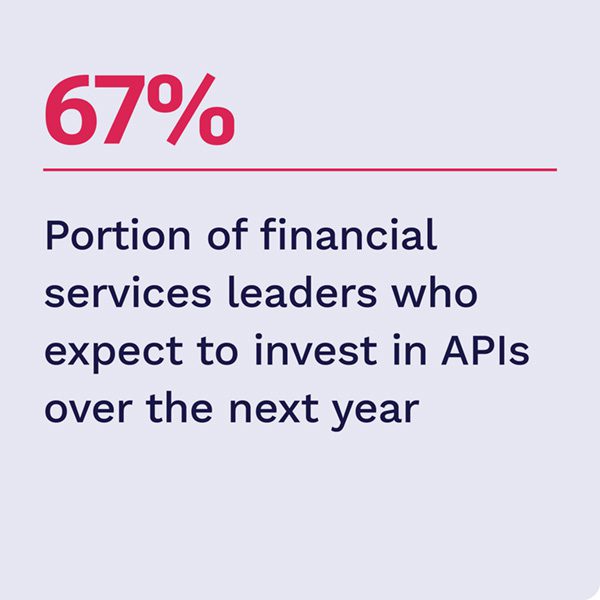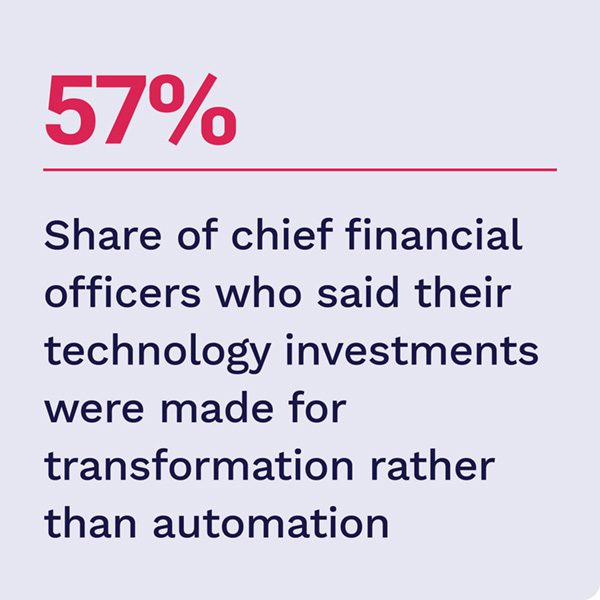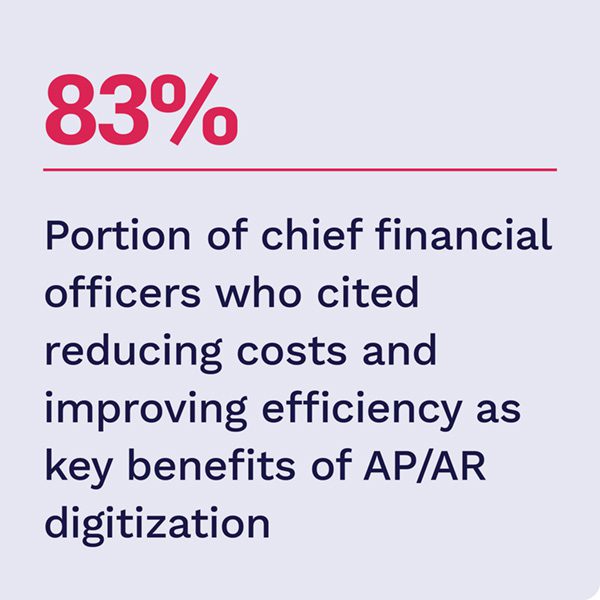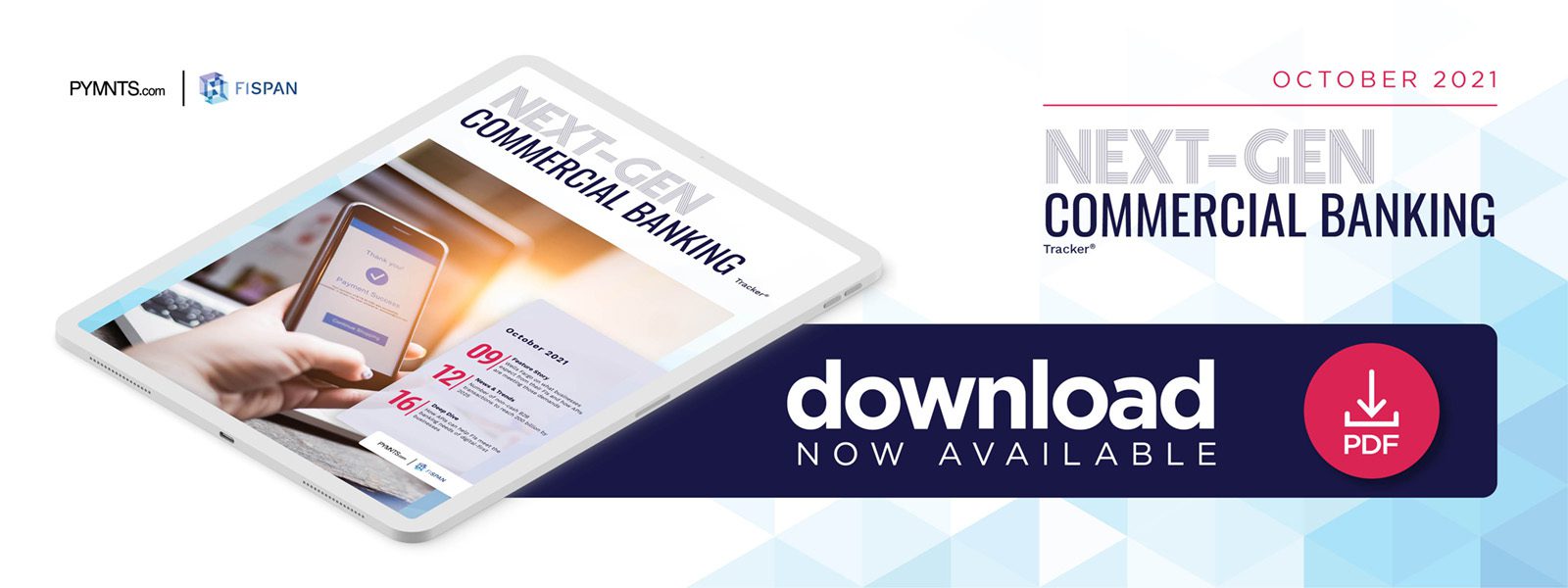APIs Help FIs Consumerize the Business Banking Experience

Manual B2B payment processes were already lengthy, costly endeavors before the global health crisis, but the frictions associated with them only deepened in its aftermath. Companies that were previously reluctant to upgrade decades-old processes raced to upgrade them to digital channels in increasingly higher figures, with one study finding the pandemic accelerated businesses’ digital adoption by as many as five years.
This shift means more companies are looking to tap digital financial tools, but it also means their expectations for the features and services their financial institutions (FIs) can offer them are growing higher. Businesses anticipate that their banks will be able to meet them wherever they are on their digitization journeys, meaning FIs that fail to keep pace will risk losing their loyalty. This makes it critical for FIs to examine how companies’ financial needs are shifting, as well as how they can tap emerging technologies such as application programming interfaces (APIs) that can connect to companies’ enterprise resource planning (ERP) systems with ease and thus create more connectivity and seamlessness for businesses.
In the inaugural Next-Gen Commercial Banking Tracker®, PYMNTS analyzes how companies’ banking needs and expectations have shifted, as well as what banks need to know to keep pace. It also examines how technologies like APIs could play a vital role in the future commercial banking space given current trends.
Around the Corporate Banking World
Businesses are increasingly seeking out cutting-edge digital tools, with one study finding 57% of companies are interested in how emerging technologies could help them enhance their current treasury management processes. The actual integration of these technologies has proved challenging for many companies, however, with the report also noting businesses are still encountering barriers to upgrading their processes due to such frictions. Lack of bank connectivity is one of the main factors preventing companies from upgrading their B2B processes, with 79% of companies stating their ERP or treasury management systems are not integrated with their FIs. Solving this connectivity issue, therefore, appears key to meeting businesses’ changing banking needs.
 APIs may prove to be an essential technology for FIs as they look to augment their systems and services accordingly. Banks themselves appear to be well convinced of APIs’ growing potential, with another report finding 90% of banks are currently using or plan to use APIs to boost their future revenue. Seventy-two percent of FIs noted a critical benefit of APIs was their ability to connect to third-party platforms, such as more seamlessly connecting with companies’ ERP or treasury management systems. This further indicates they will likely play a key role in the business banking world of the future.
APIs may prove to be an essential technology for FIs as they look to augment their systems and services accordingly. Banks themselves appear to be well convinced of APIs’ growing potential, with another report finding 90% of banks are currently using or plan to use APIs to boost their future revenue. Seventy-two percent of FIs noted a critical benefit of APIs was their ability to connect to third-party platforms, such as more seamlessly connecting with companies’ ERP or treasury management systems. This further indicates they will likely play a key role in the business banking world of the future.
Interest in APIs is rising among FIs worldwide. Another report surveying financial entities in the United Kingdom found 77% of top decision-makers at these organizations said investment in automation and digital technologies — such as APIs — is a key strategic goal for them in the next year. The same percentage of respondents also stated their aims for these investments are to either improve their clients’ banking experiences or to boost growth, showing FIs are well aware of the need to continuously innovate their existing digital solutions. APIs and cloud technologies were two of the top technologies banks highlighted as key investments, indicating a growing focus on connectivity and transparency. Determining how to best apply these tools to their own platforms to meet the needs of their clients appears to be a top future priority for FIs.
For more on these and other stories, visit the Tracker’s News & Trends.
Wells Fargo Explains How APIs Can Help Businesses Bank More Seamlessly
Businesses were forced to reexamine their banking experiences in the wake of the global health crisis, causing an uptick in the number of companies turning to digital channels for faster and more efficient payments. This represents a key opportunity but also a major challenge for FIs, as they must offer businesses the digital-first tools and experiences they are coming to crave in a way that easily integrates with their existing payments systems, explained Reetika Grewal, head of digital for commercial banking and corporate and investment banking at Wells Fargo.
To learn more about why businesses are seeking simplified payment experiences and how APIs can help FIs to provide them, visit the Tracker’s Feature Story.
Deep Dive: How FIs Can Tap APIs to Build out Next-Gen Corporate Banking
Businesses are racing to adopt digital tools and payment methods to stay competitive in the post-pandemic banking environment. This also means their tolerance for friction inside their typical banking experiences is growing lower and lower, with businesses placing higher expectations for speed and convenience on their FIs. It is therefore critically important for corporate banks to understand how the financial needs of their corporate clients have shifted in the past year and what technologies and tools they can tap to ensure they can meet businesses’ new asks.
To learn more about what kind of banking experiences companies are now expecting from their banks and how FIs can keep pace, visit the Tracker’s Deep Dive.
About the Tracker
The Next-Gen Commercial Banking Tracker®, done in collaboration with FISPAN, examines the latest corporate banking trends, including how businesses’ financial and payment needs are shifting and why. It also analyzes what technologies and tools could help FIs to grow the loyalty and engagement of corporate clients.

